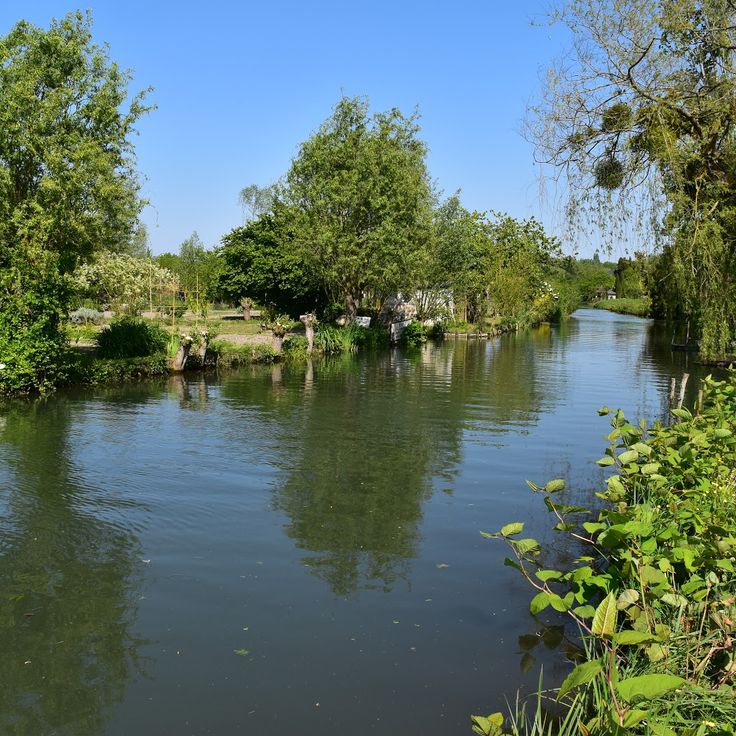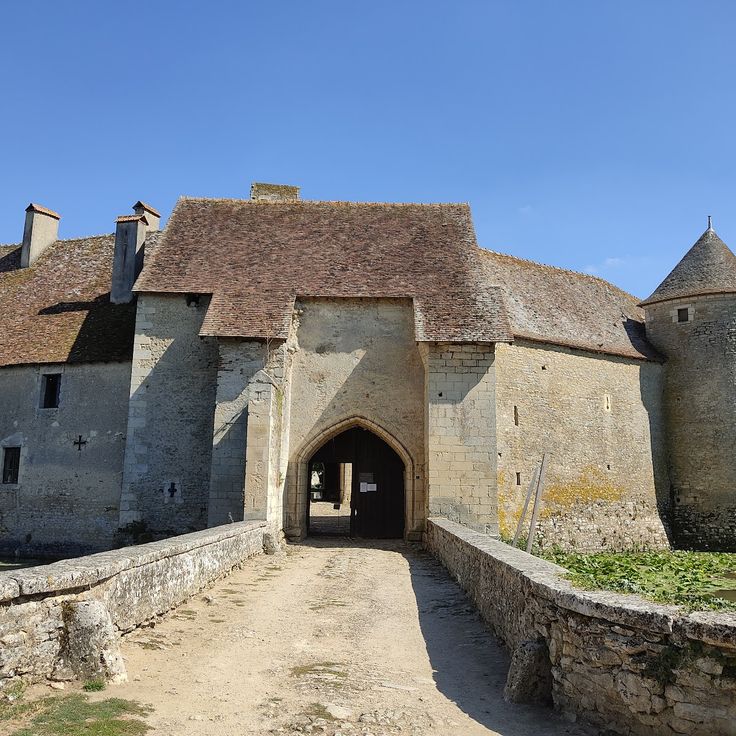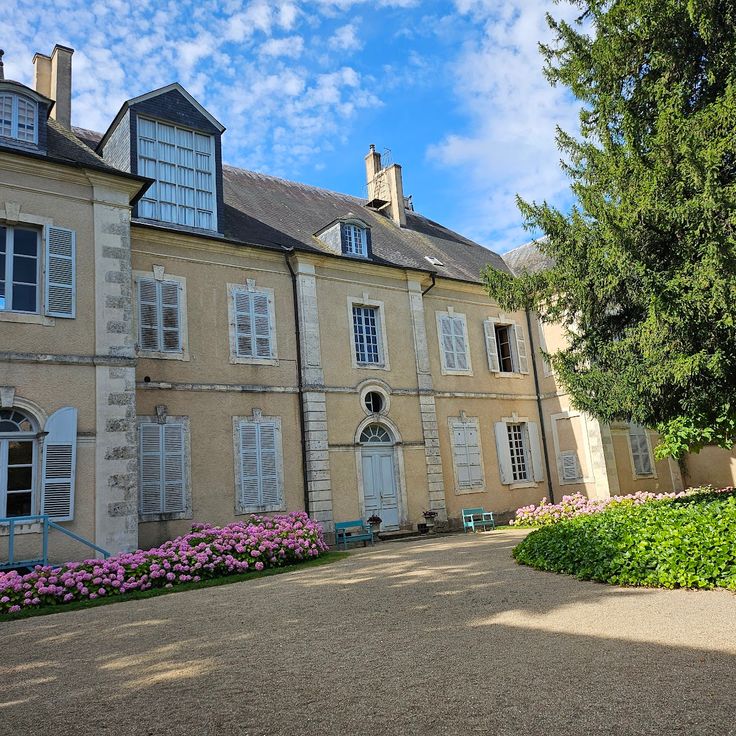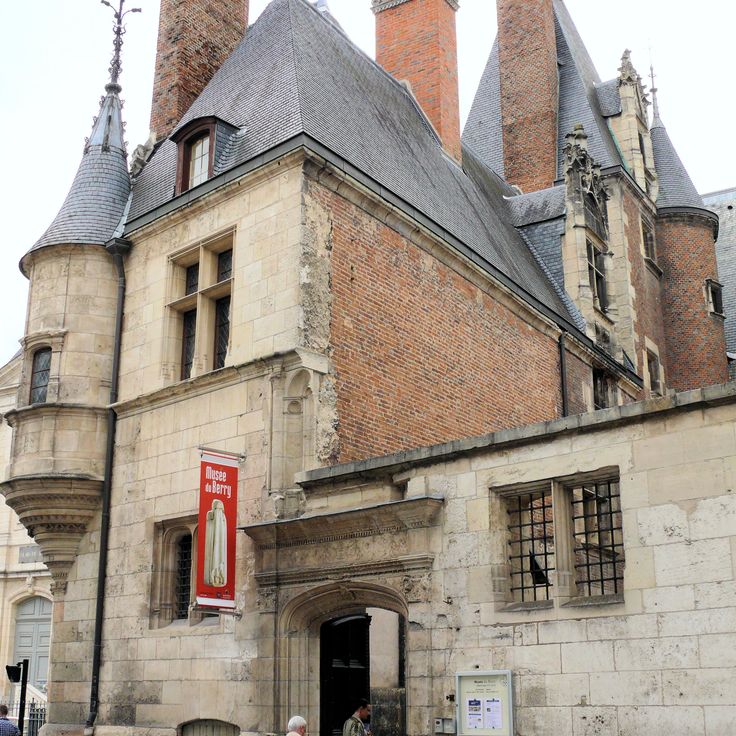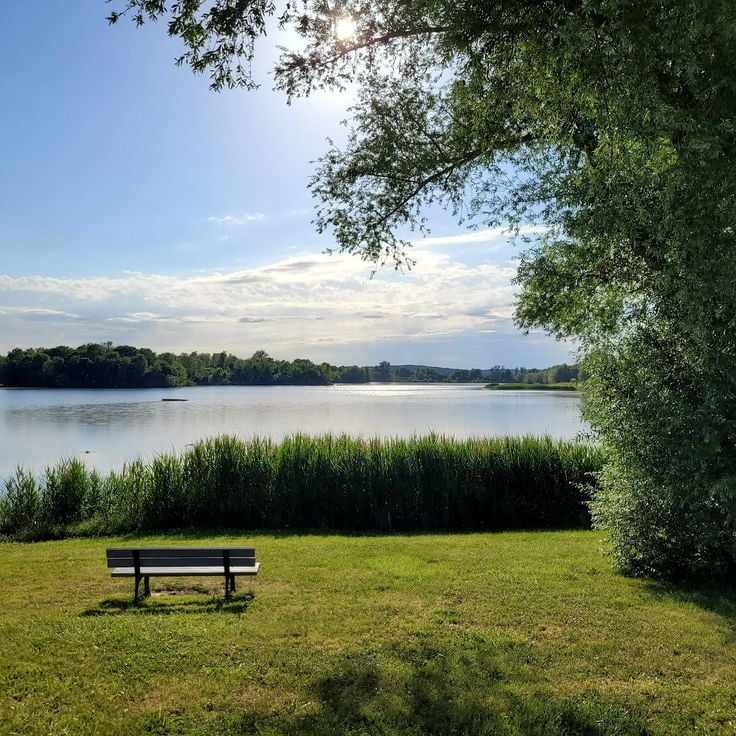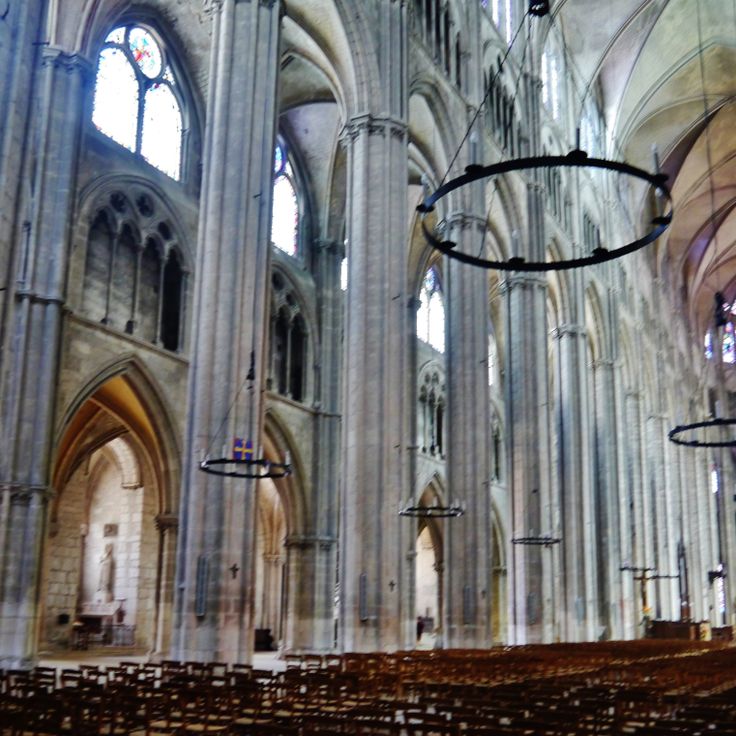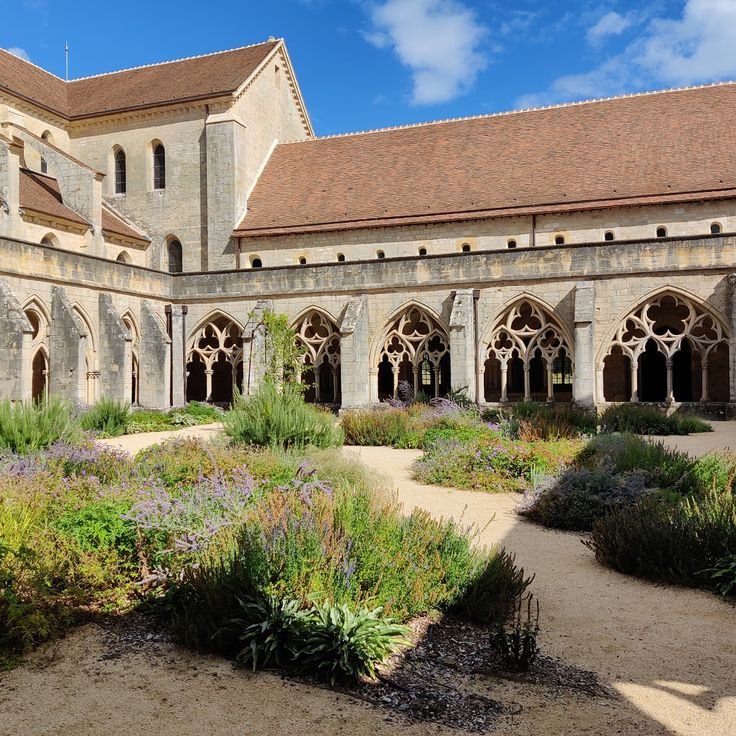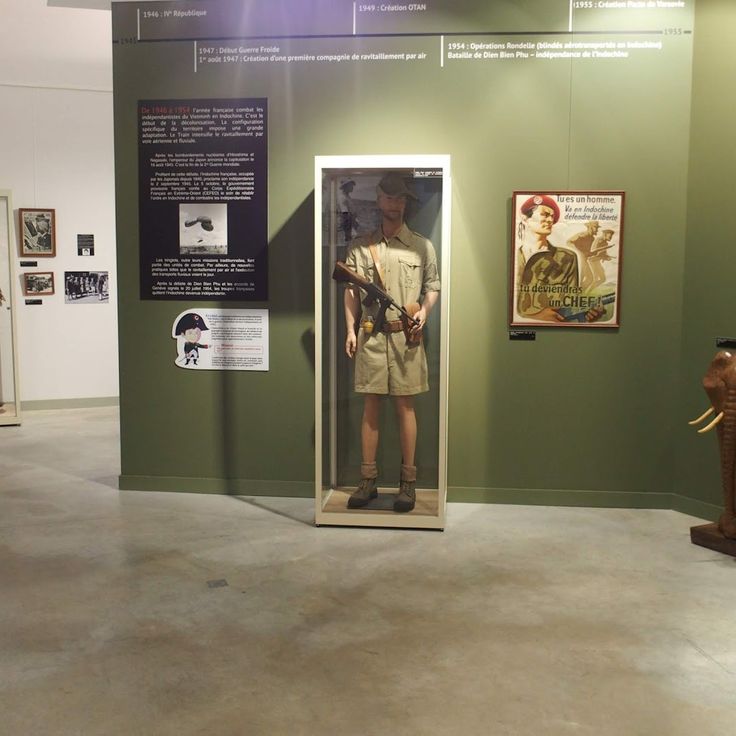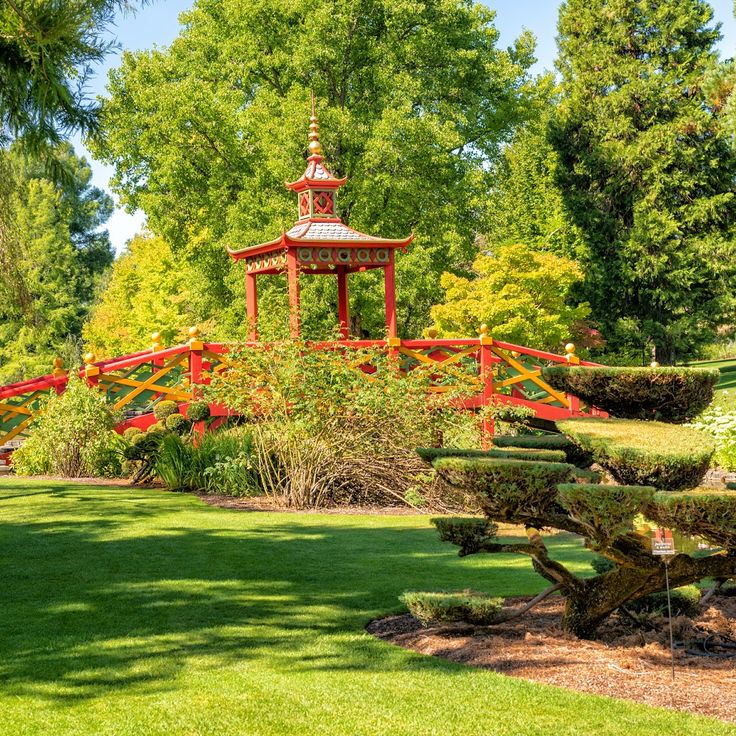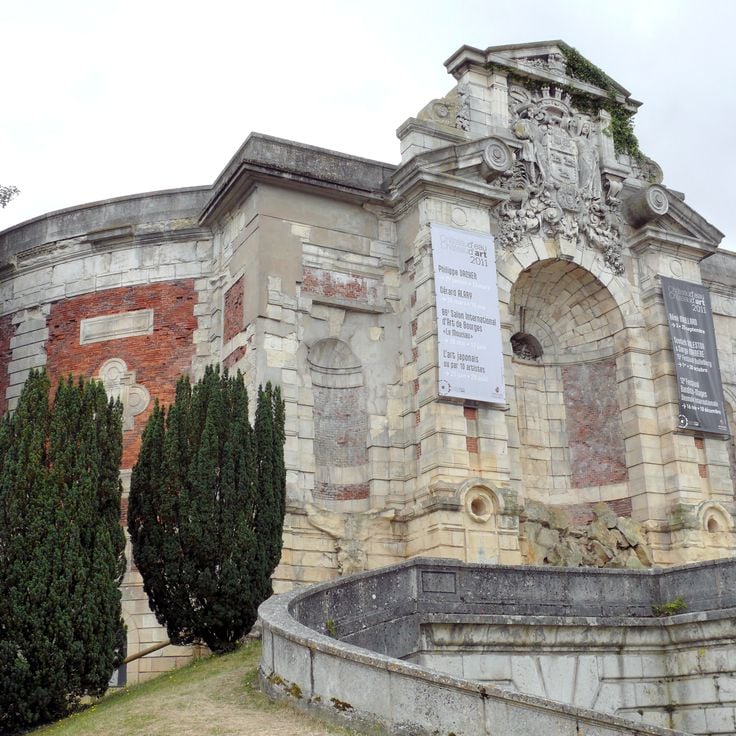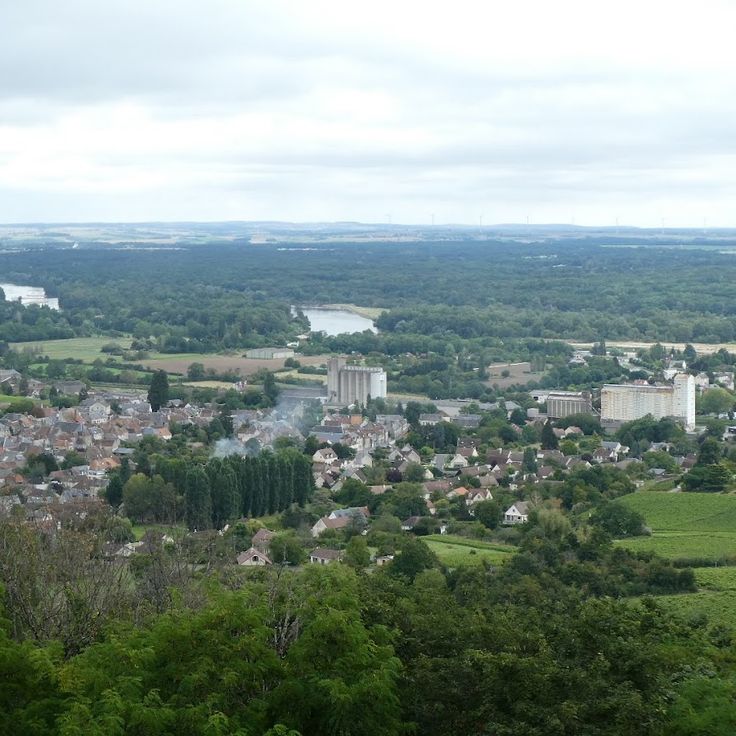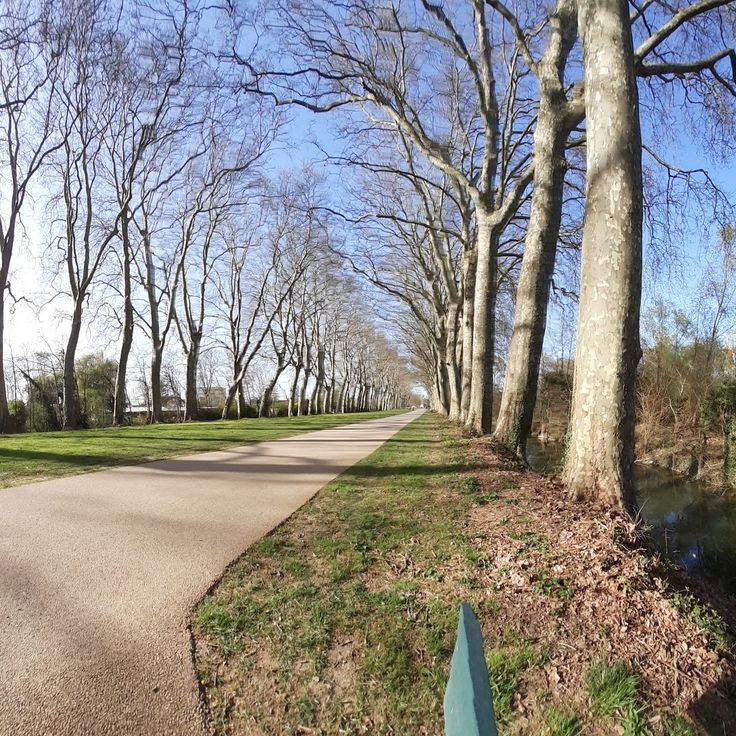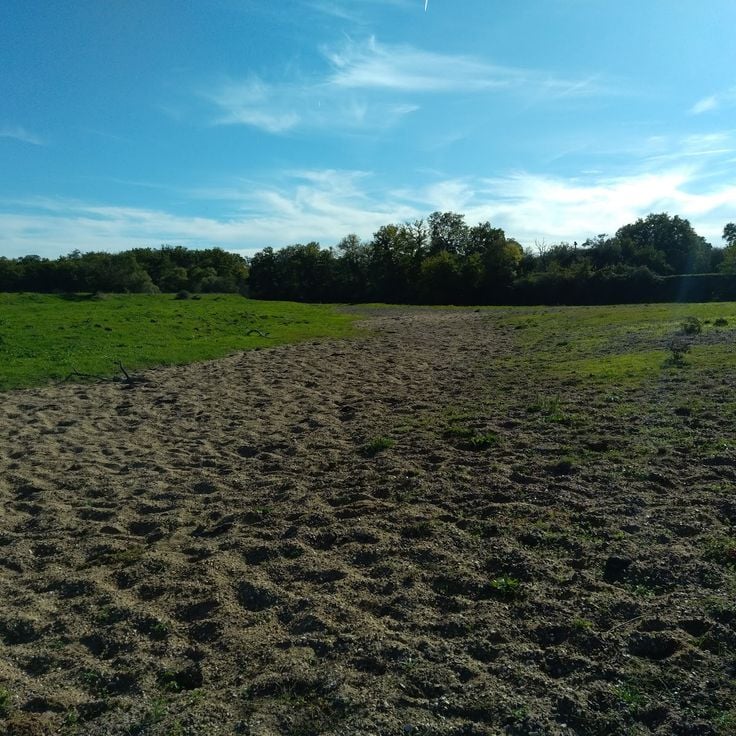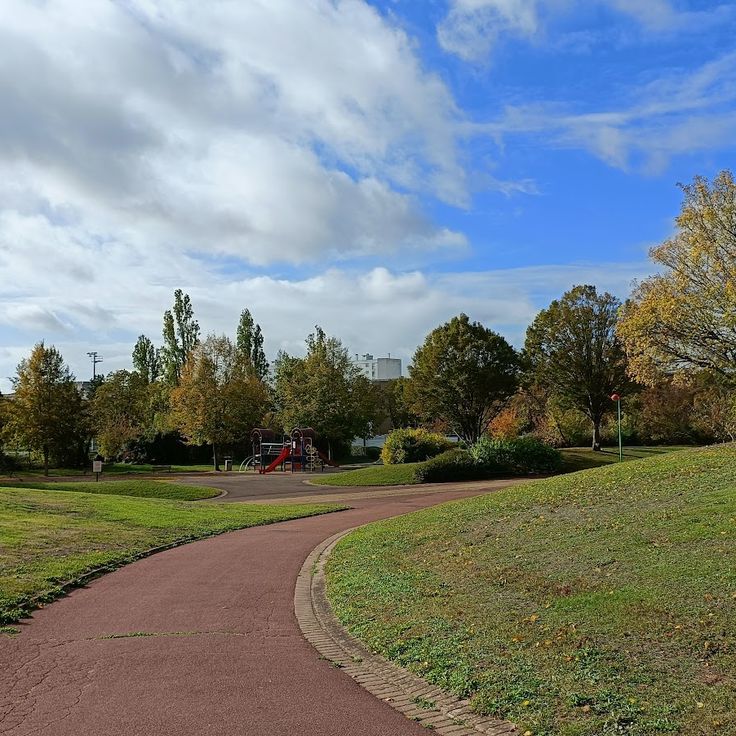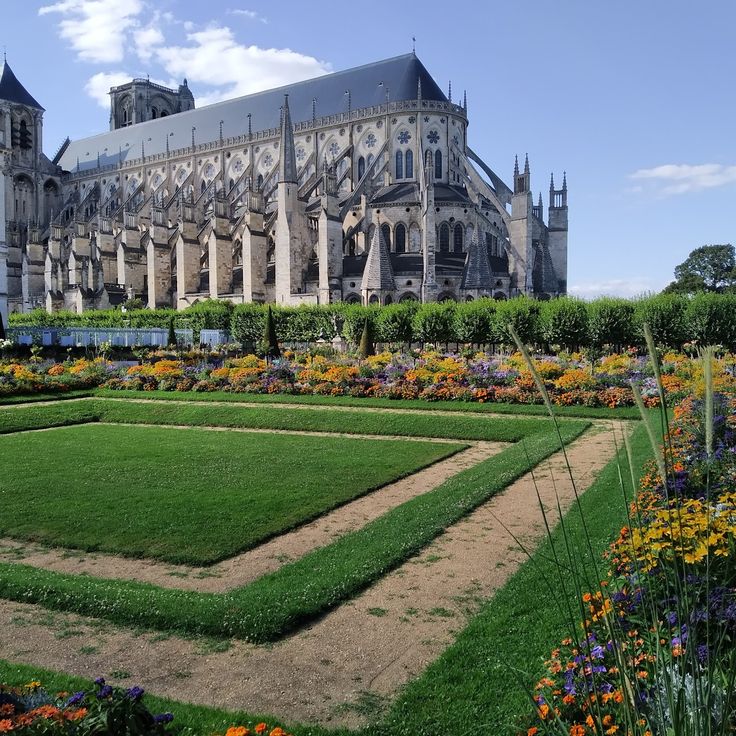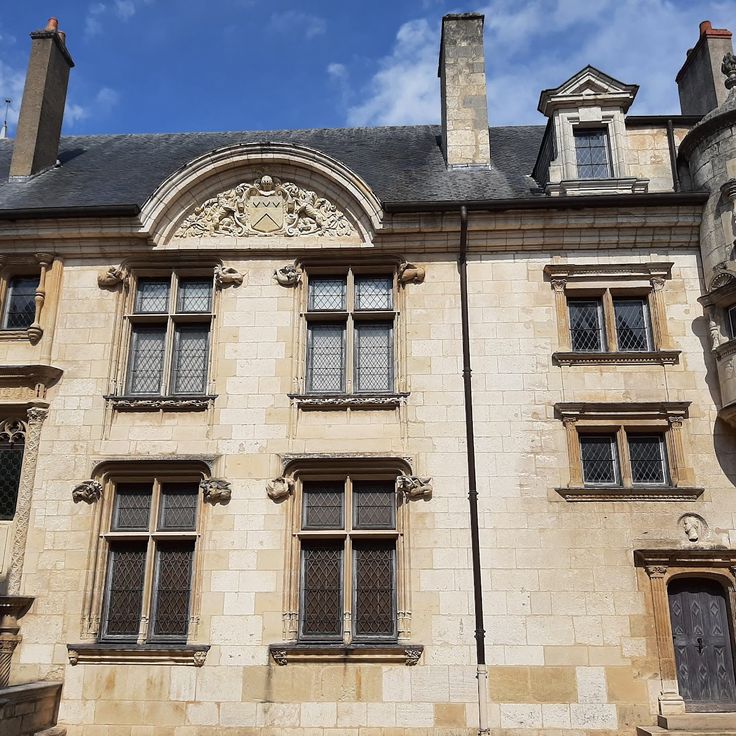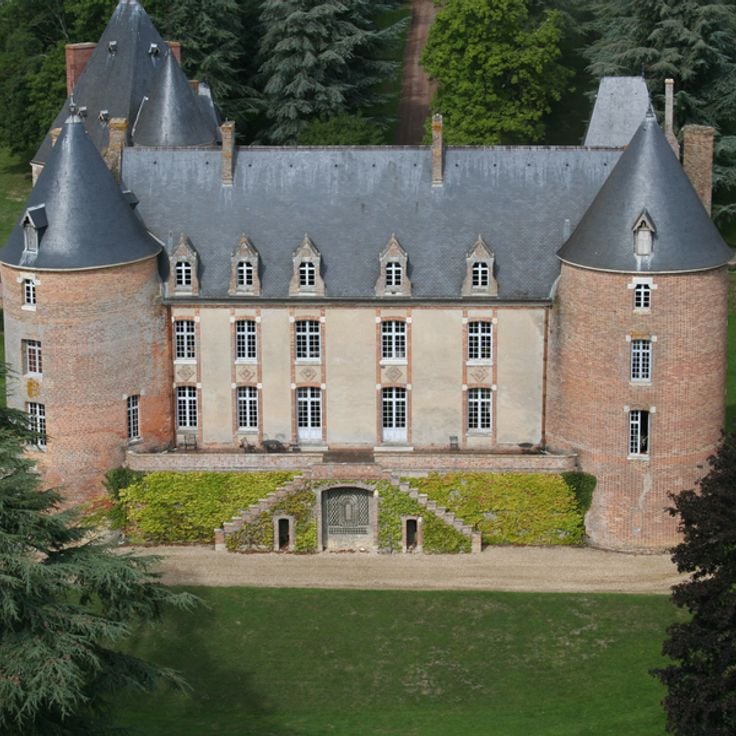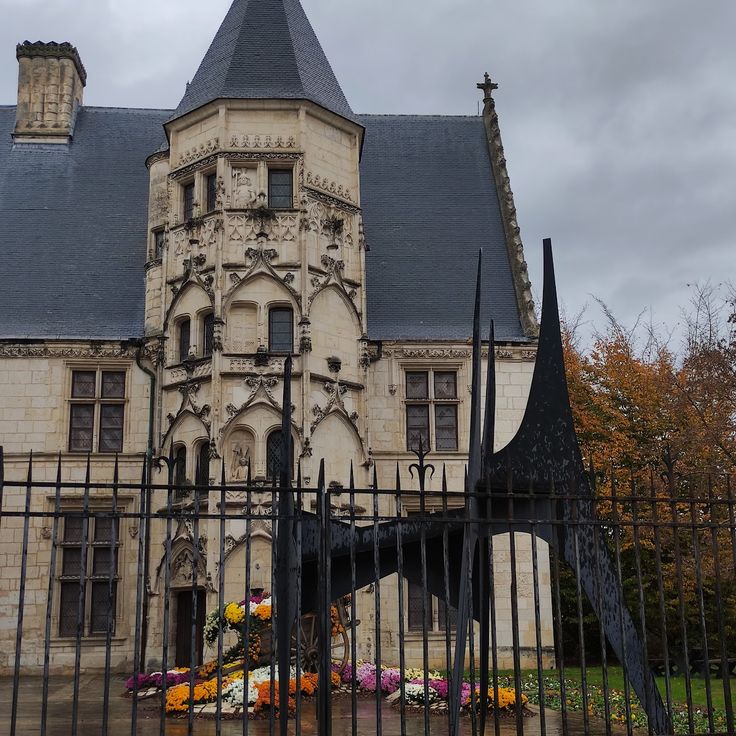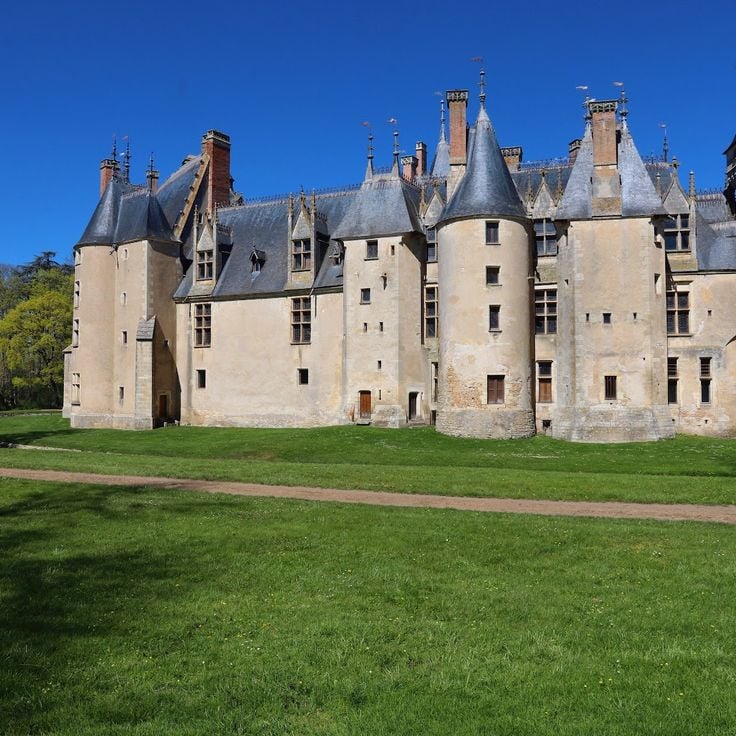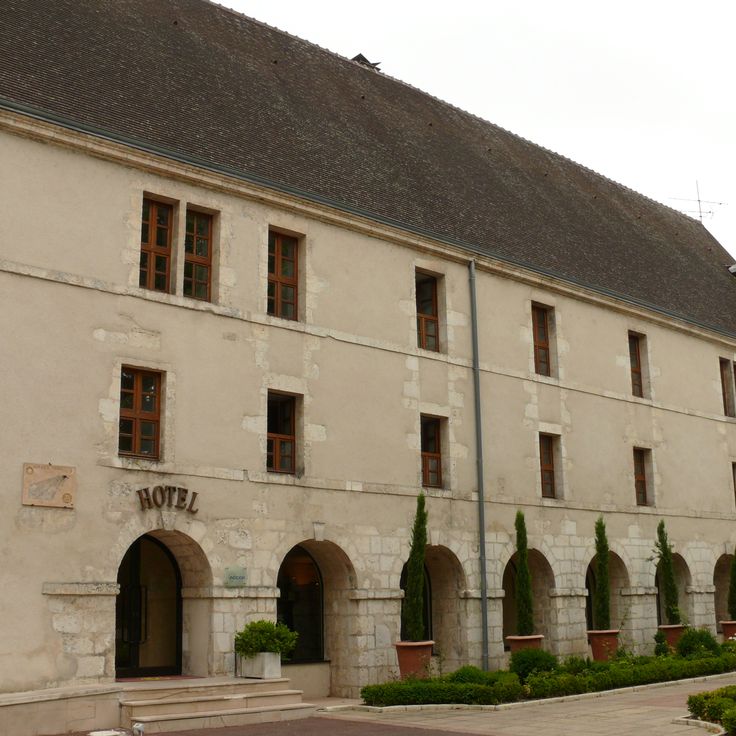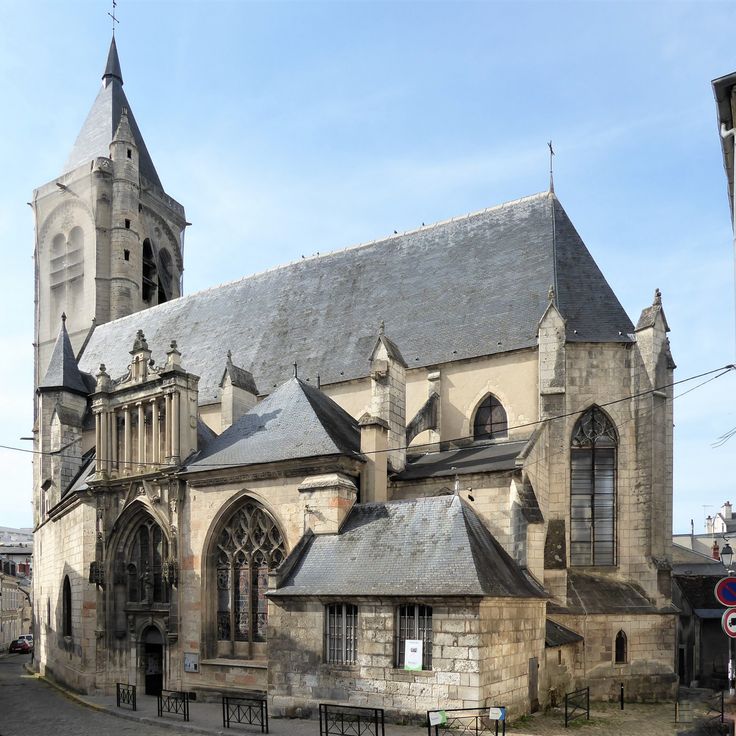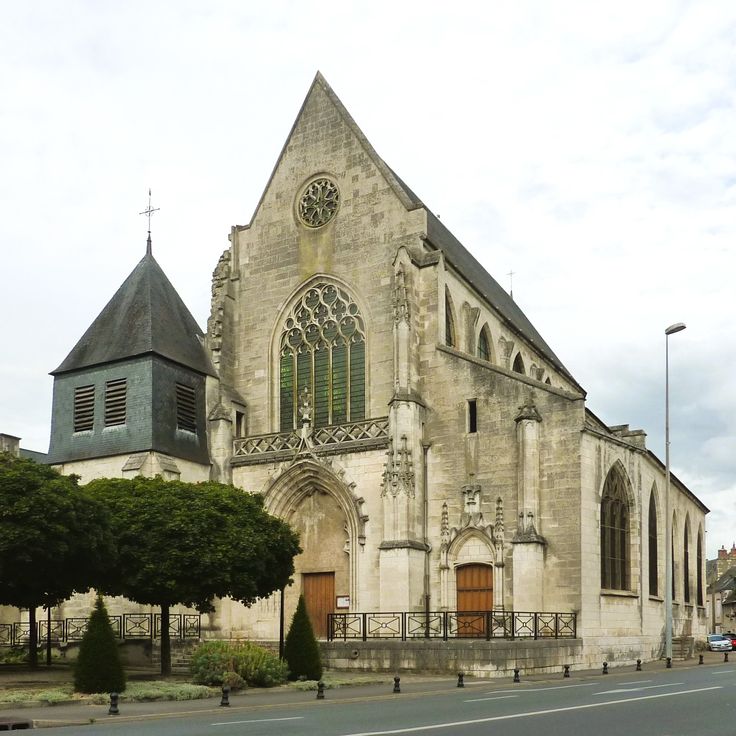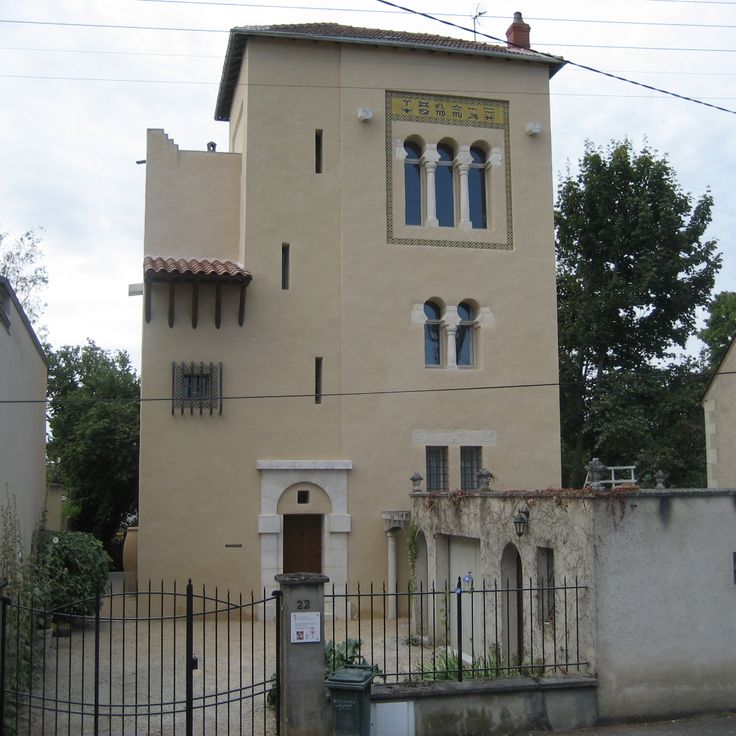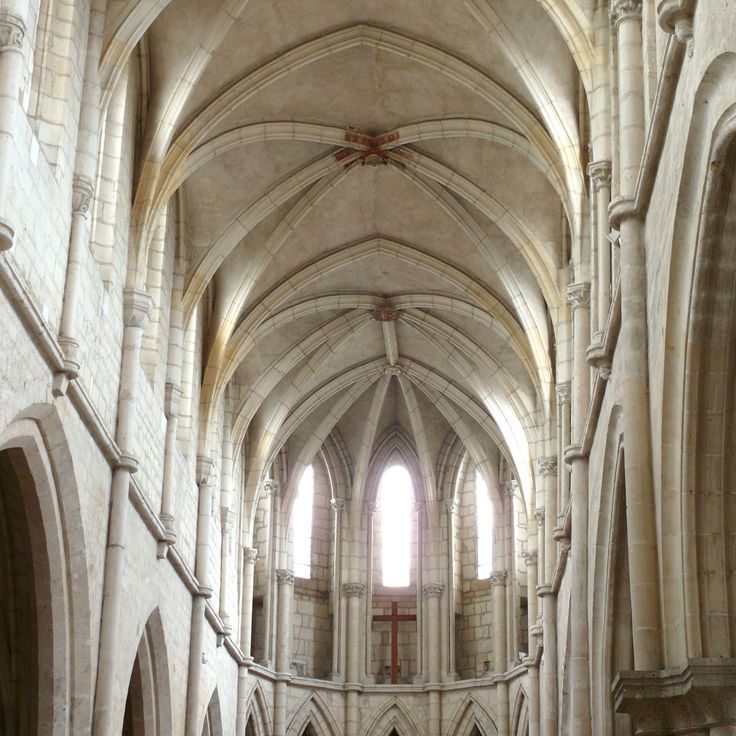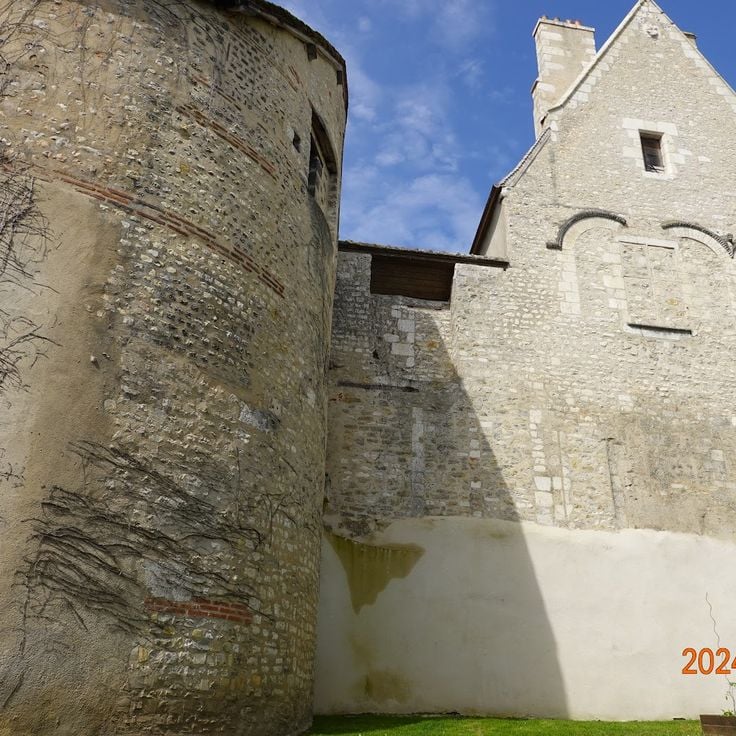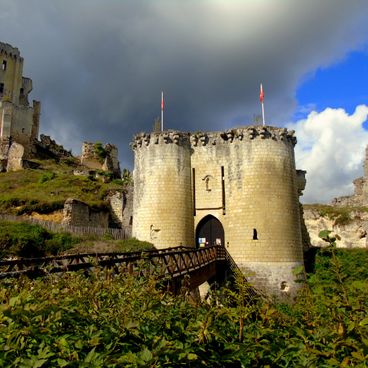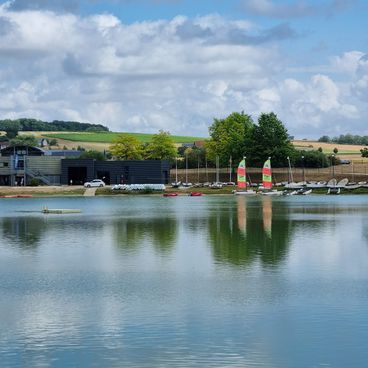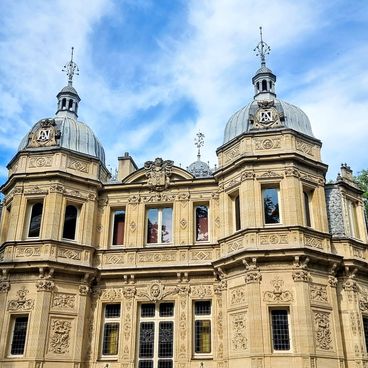Berry gathers a historical and natural heritage that spans from the Middle Ages to the Renaissance. The Saint-Étienne Cathedral in Bourges, built between 1195 and 1255, is one of France's major Gothic monuments, with five sculpted portals and 13th-century stained glass windows. The Jacques Cœur Palace, home of Charles VII's treasurer, showcases 15th-century civic architecture. The Bourges marshlands consist of a 135-hectare network of vegetable gardens irrigated by medieval canals, still cultivated in the city center. The region preserves several medieval castles such as Sagonne with its 30-meter square keep, and Noirlac Abbey, which features a complete monastic complex with cloister and monastic buildings. George Sand's estate in Nohant-Vic offers insight into the novelist's residence with period furnishings and her private theater. The Berry and Resistance museums in Bourges feature collections from Gallo-Roman times, medieval periods, and testimonies from World War II. The area also includes natural spaces like Lake Virlay, suitable for fishing and forest walks.
The Jacques Cœur Palace is a 15th-century urban residence that exemplifies the rich historical and cultural heritage of Berry. Built by Jacques Cœur, financier to King Charles VII, this palace combines Gothic civic architecture with Renaissance decorative elements. The building displays numerous sculptural details and features an innovative spatial layout that reflects how wealthy merchants lived during this period.
The Bourges Marshes form a network of vegetable gardens crossed by canals, established during the Middle Ages. This 135-hectare area allows residents to grow vegetables in the heart of the city and shows how medieval urban planning combined living spaces with food production. The canals date back centuries and still irrigate the gardens today. This space is an important example of how medieval towns organized themselves to be self-sufficient.
Sagonne Castle is a medieval fortress from the 12th and 13th centuries, part of Berry's historical heritage. Its distinctive square keep rises 30 meters high, defining the character of this historic site. In the 17th century, the complex expanded with the addition of a chapel and residential buildings that complement the original defensive structure. The castle reveals how people in this region lived and protected their estates across the centuries.
George Sand's Estate in Nohant-Vic preserves the writer's living quarters with 19th-century furniture. The garden and small theater recall the numerous artists such as Chopin, Liszt and Delacroix who visited here. The rooms display the literary and social life of that period, allowing visitors to understand the creative world of this important French author.
The Berry Museum in Bourges presents the region's history from Roman times through the Renaissance. Housed in a 16th-century mansion, the museum displays Roman artifacts that document life in the ancient settlement. Medieval sculptures from local churches and monasteries highlight the artistic achievements of past centuries. The pottery collection showcases traditional ceramics from Berry spanning the Middle Ages to modern times, illustrating craftsmanship and daily objects used by residents over centuries.
Lake Virlay lies on the edge of Saint-Amand-Montrond and is part of the region's natural heritage in Berry. The lake offers fishing and water sports opportunities across several hectares. Forested areas surround the water, with marked walking trails crisscrossing through the woods. Along the shores, visitors find equipped picnic areas and boat launch ramps.
The Saint-Étienne Cathedral in Bourges is a Gothic masterpiece built between 1195 and 1255. This religious building defines the historical heritage of Berry with its five sculpted portals and 13th-century stained glass windows. The cathedral extends 125 meters in length and has been a UNESCO World Heritage site since 1992. It demonstrates the architectural innovations of its era and remains a central monument for understanding French medieval sacred architecture.
The Museum of Resistance in Bourges preserves documents, objects and photographs that document the activities of the Resistance movement in the Cher department during the German occupation from 1940 to 1945. The collection shows the organization of local resistance networks, sabotage operations and the daily lives of fighters in this region. Within the historical heritage of Berry and Bourges, this museum offers insight into the recent history of the region during World War II.
Noirlac Abbey is a 12th-century Cistercian monastery in the Berry region that reveals how monks lived and worshipped there. The complex has kept its medieval character: you can see the cloister with Romanesque and Gothic arches, the chapter house with ribbed vaults, and the monks' dormitories in their original arrangement. The church feels open and simple, as Cistercian buildings were meant to be, without unnecessary decoration. This abbey forms part of Berry's historical heritage, which spans from the Middle Ages through the Renaissance.
The Military Train Museum in Bourges displays railway vehicles and transport equipment used by the French army across different periods. The collection includes locomotives, wagons, and technical equipment deployed for military purposes from the early 19th century to modern times. The museum documents the development of military railway operations in France and connects to the broader historical heritage of Berry, which preserves monuments and sites from the Middle Ages through the Renaissance.
Apremont Floral Park sits in the heart of Berry and stretches over 7 hectares along the Allier River. The park displays roses, irises, and peonies in carefully tended beds connected by water features and Asian structures such as pagodas and ponds. Visitors walk through different garden spaces and experience the blend of European gardening traditions with Eastern design ideas. This garden complements Berry's heritage from the Middle Ages through the Renaissance, offering a peaceful place near historical monuments like Bourges Cathedral.
The historic center of Bourges is a key place for understanding the heritage that spans Berry's history from the Middle Ages to the Renaissance. Over 40 hectares, the old town contains more than 400 timber-framed houses from the 15th century. Cobblestone streets connect Renaissance townhouses and show how this former capital of Berry province was organized and lived in. The center sits alongside the Cathedral of Saint-Étienne and the Palace of Jacques Cœur, which stand as the architectural landmarks of this medieval and Renaissance city.
The Natural History Museum of Bourges displays its scientific collections in a 19th-century building. This museum holds 200,000 taxidermied animal specimens, extensive mineral collections, and fossils that document the geological history of the region. Here, visitors can discover the natural diversity and geological development of Berry and gain insight into the scientific research that has shaped this area.
This town sits on a limestone hill at 310 meters in elevation, surrounded by ramparts and featuring a 15th-century tower and a Romanesque church. Sancerre exemplifies the medieval character of the Berry region, which preserves important Gothic monuments, Renaissance architecture, and cultivated marshlands alongside natural spaces and historical sites spanning from the Middle Ages to more recent centuries.
This green passageway connects Bourges from north to south and weaves through the historic heritage of the Berry region. It runs for 5 kilometers across the city and offers walkers and cyclists a route through natural settings. The passageway sits within a landscape shaped by medieval monuments like the Saint-Étienne Cathedral and the Jacques Cœur Palace, as well as the traditional marshlands that have been cultivated in the city center since medieval times.
This natural area of Noirlac Bocage spans 20 hectares along the Cher River, with a floodplain forest, wet meadows, and rare plant species. As part of Berry's historical and natural heritage, which extends from the Middle Ages to the Renaissance, this space preserves the region's ecological character alongside its medieval castles, abbeys, and historic architecture.
The Palace of Justice Garden is part of the rich historical and natural heritage of Berry, which spans from the Middle Ages to the Renaissance. This green space in the center of Bourges offers lawns, benches, and shady paths between the courthouse and shops. The garden sits in a city that houses the impressive Saint-Étienne Cathedral, built between 1195 and 1255, featuring five sculpted portals and 13th-century stained glass windows. This location allows visitors to take a break amid medieval architecture and the activity of the city center.
Gibjoncs Park is a recreational space in Bourges that complements the historical and natural heritage of the Berry region. This municipal park spans 12 hectares and offers walking areas, a pond, picnic spots, and play areas for children. It provides a place for visitors to enjoy nature and escape the pace of the city, adding to Bourges' character as a destination where medieval monuments, Renaissance palaces, and green spaces coexist.
The Archbishop's Gardens of Bourges are part of the region's rich historical and natural heritage that spans from the Middle Ages to the Renaissance. These French formal gardens, dating to 1615, are laid out across three terraces and offer views of the magnificent Saint-Étienne Cathedral. Built between 1195 and 1255, the cathedral ranks among France's greatest Gothic structures, with five sculpted portals and 13th-century stained glass windows. Here, garden and architecture come together as testimony to craftsmanship and design across several centuries.
Verrerie Castle is a 15th-century fortress built by Jean Stuart and part of Berry's historical heritage spanning from the Middle Ages to the Renaissance. The castle features a chapel with stained glass windows and sits within a 14-hectare pond that surrounds the property, creating a distinctive water-bound landscape.
The Hôtel Lallemant was built between 1487 and 1493 by the merchant Lallemant family and stands as part of the medieval and Renaissance heritage that defines Berry. This urban mansion combines Flamboyant Gothic design with early Renaissance details. The facade displays richly decorated ornaments and sculptural work. Inside, an interior courtyard features galleries, columns and arcades. The rooms contain carved wooden ceilings and fireplaces from the transition between the Middle Ages and the modern era. Today the building houses the Museum of Decorative Arts of Bourges.
Blancafort Castle was built in the 15th century and remodeled in the 19th century. Within Berry's historical heritage collection, this castle contributes to the region's architectural diversity spanning from the Middle Ages to the Renaissance. The property includes a 30-hectare park with French formal gardens arranged according to geometric principles. The building displays architectural elements from different periods and is located in the Cher department in the Berry region.
The Maurice Estève Museum in this collection has presented since 1994 in the Hôtel des Échevins a permanent collection of 900 works by painter Maurice Estève. Born in Bourges, this artist gave his entire body of work to the city, including paintings, drawings, watercolors, and collages. The museum lets visitors follow the artistic evolution of this important representative of the École de Paris.
Meillant Castle is part of Berry's historical heritage spanning from the Middle Ages to the Renaissance. This medieval fortress from the 13th century features an octagonal tower and elaborate Flamboyant Gothic carvings. The complex includes a chapel and several decorated reception rooms with historical furnishings and wall paneling that offer a window into the aristocratic life of the period.
The Saint-Ambroix Abbey in Bourges belongs to Berry's collection of historical monuments and natural spaces spanning from the Middle Ages to the Renaissance. This Benedictine monastery was founded in the 6th century and underwent complete reconstruction in the 16th century. The monastic buildings now house a school. The original abbey church was destroyed during the French Revolution and no longer exists.
Notre-Dame Church in Bourges is part of Berry's rich medieval and Renaissance heritage. Built in the 12th century and modified during the 15th and 16th centuries, this church displays Gothic sculptures on its western portal. Inside, the church preserves several medieval stained glass windows that show scenes from religious iconography.
Lazenay Castle is a 17th-century manor house that represents the historical legacy of Berry. Built on a three-hectare estate with a wooded park, it reflects how the wealthy lived during this period. The building has been listed as a historical monument since 1994 and offers insight into the architecture and lifestyle of the Renaissance era in a region known for its medieval castles and historic palaces.
Saint-Bonnet Church was built in the 15th century on the site of an earlier Romanesque chapel as part of Berry's rich medieval and Renaissance heritage. The church features three aisles and contains Renaissance stained glass windows that cast colored light throughout the interior.
This astronomical clock was installed in 1424 in the Saint-Étienne Cathedral of Bourges. The mechanism shows hours, lunar phases, and tides, representing a notable example of medieval clockmaking craftsmanship. Within the context of Bourges and Berry's historical heritage, this clock demonstrates the technical skill that flourished in the region during the Middle Ages and Renaissance, while the cathedral itself stands among France's major Gothic monuments.
The Prés Fichaux Gardens in Bourges were created in 1923 on a four-hectare site in the city center. This public park in Art Deco style features geometrically arranged flower beds, water basins, and several sculptures. The site also contains trees, some of which are over one hundred years old. These gardens add to the heritage of Berry, which spans from the Middle Ages to the Renaissance.
Place Gordaine is located in the historic center of Bourges and is part of Berry's heritage spanning from the Middle Ages to the Renaissance. This medieval square is lined with half-timbered houses from different periods, which give the place its architectural character and house shops, restaurants, and terraces where locals and visitors gather.
Saint-Pierre Church in Bourges is part of the region's historical heritage spanning from the Middle Ages to the Renaissance. The building was constructed in the 15th century and displays a polygonal chevet, a characteristic feature of Gothic construction from this period. The church contains colored stained glass windows and stone vaults that span the nave. It represents one of several significant religious structures in Bourges that reflect the area's medieval and Renaissance architectural traditions.
This Gallo-Roman rampart was built in the 4th century to defend the ancient city of Avaricum against invasions. The preserved sections show Roman construction methods using a combination of stone and brick. The wall rises several meters in some places and measures approximately four meters in thickness. This fortification ranks among the most important Roman remains in Bourges and documents the military architecture of Late Antiquity. It illustrates the historical importance of Bourges within the collection exploring medieval and natural heritage of the Berry region.

